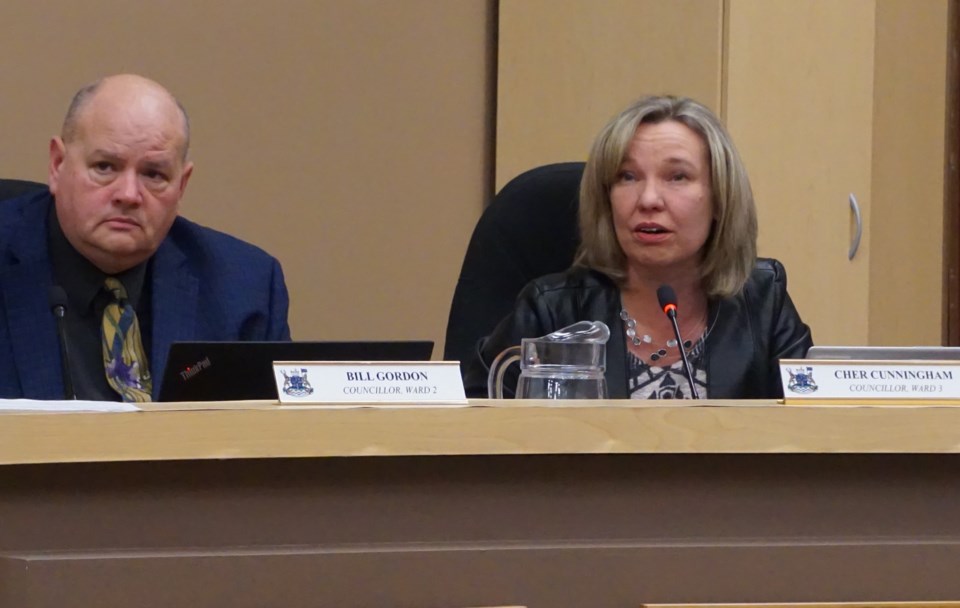The Town of Midland recognizes that it is located on land which is the traditional and Treaty territory of the Anishinabek people, now known as the Chippewa Tri-Council comprised of Beausoleil First Nation, Rama First Nation, and the Georgina Island First Nation.
These words are part of one of the three Territorial Land Acknowledgements Midland council recently unanimously supported and approved for use in town matters and documents.
"Midland has been ahead of the curve on trying to create respectful communication that then rolled into side-by-side working on the land acknowledgement," said Coun. Cher Cunningham, a member of the Indigenous Relations Committee.
The town established the committee in 2016 as part of commitment to reconciliation. One of many tasks started by the committee was working to develop traditional land acknowledgements. Such statements are used by governments as a step in the practice of reconciliation aimed at recognizing the traditional and treaty territory of Indigenous peoples.
"We have a unique situation in Midland," said Cunningham. "We have Inuk people in Midland. This is the historic homeland of the Metis people. We have the Beausoleil First Nation here. So we were looking to consult with the full range of our Indigenous people in order to get a truly respectful version of the acknowledgement."
A report to council noted a draft acknowledgement was prepared in 2018. It was reviewed and vetted by the committee, and was shared with Jamie Hunter, local historian and former Huronia Museum executive director.
The draft was also reviewed by members of the Beausoleil First Nation council, which was represented by Coun. Clayton King. The draft was also reviewed by the Huron-Wendat First Nation.
The acknowledgement has been drafted in three parts so that it can be applied at different occasions and for different purposes in the town. The three versions for use are for meetings, events, and formal published reports, such as the town's new official plan.
There is also a fuller acknowledgment, which provides historical details on the areas of indigenous presence and traditional and treaty rights, that the Town of Midland could use on other occasions, for instance, in the Protocol Agreement with Beausoleil First Nation and on the town's website.
The Indigenous Relations Committee is recommending that the acknowledgements be approved for one year. During that time, the committee will collect feedback on the use of the acknowledgement and bring that information back to council, including any corrections and/or refinements that may need to be introduced to address community input and comments.
"That brings us to today and the ability to at last have an approved version of the land acknowledgement," said Cunningham, "which may not be perfect, but that's not what the Indigenous people are looking for.
"They're looking for it to be an awareness piece, something that lets people know that yeah we live on treaty land and build that awareness so that people can get that understanding in that small yet significant statement," she added.
Here is the text of the full acknowledgements as approved by council:
For use in meetings and events: The Town of Midland recognizes that it is located on land which is the traditional and Treaty territory of the Anishinabek people, now known as the Chippewa Tri-Council comprised of Beausoleil First Nation, Rama First Nation, and the Georgina Island First Nation. This territory is within the pre-confederation Treaty 5 and Treaty 16, and included within the Williams Treaties of 1923. The Town of Midland recognizes that it is located on land which is the traditional territory of the Huron-Wendat and the historic Homelands of the Metis, and that our Town is home to a large and diverse community of Indigenous peoples.
For use in public reports: The Town of Midland recognizes that it is located on land which is the traditional and Treaty territory of the Anishinaabek people, now known as the Chippewa Tri-Council comprised of Beausoleil First Nation, Rama First Nation, and the Georgina Island First Nation. This territory is within the pre-confederation Treaty 5 and Treaty 16, and included within the Williams Treaties of 1923. Several Treaties of Peace were made on a Nation to Nation basis between the Crown and the Anishinaabek and the Haudenosaunee peoples. The Dish with One Spoon Waumpum Belt and the Five Council Fire Wampum Belt speak upon the peace agreements between these two nations. The Town of Midland recognizes that it is located on land which was is the traditional territory of the Huron-Wendat and the historic Homelands of the Metis, and that our Town is home to a large and diverse community of Indigenous peoples.
For use on all other occasions: Since time immemorial the area which is now the Town of Midland has been the homeland of the Huron-Wendat Nation and of the Anishinaabek people, who are now referred to in English as the Chippewa Tri-Council and comprised of Beausoleil First Nation, Rama First Nation, and the Georgina Island First Nation. The land which the Town is situated is within a portion of pre-confederation Treaty #5, which was negotiated between the Crown of Britain and the Chiefs of Lakes Huron and Simcoe at the town of York on May 22, 1798. A small portion of Midland is situated within the territory of Treaty #16, signed between the Crown of Britain and the Chiefs of the Chippewas of Lakes Huron and Simcoe on November 18, 1815. These two pre-confederation treaties were also written into the Williams Treaties of 1923. The land within Treaty #5 and #16, as well as all other Pre-confederation Treaties dealing with the Anishinaabe were obtained through conquest and several peace treaty agreements with the Haudenosaunee peoples, which had the Haudenosaunee people move back into upper New York State and at the mouth of the St. Lawrence in the late 1600’s and early 1700’s, until other communities were created in Ontario after the American Revolutionary War. Treaties were made on a Nation to Nation basis between the Anishinaabek and the Haudenosaunee.
